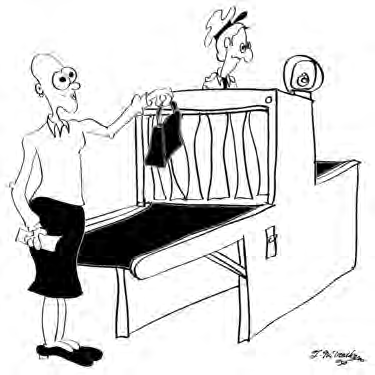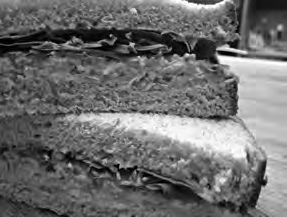100 Perks of Having Cancer: Plus 100 Health Tips for Surviving It (40 page)
Read 100 Perks of Having Cancer: Plus 100 Health Tips for Surviving It Online
Authors: Florence Strang
Tags: #Health; Fitness & Dieting, #Diseases & Physical Ailments, #Internal Medicine, #Oncology, #Cancer, #Medicine & Health Sciences, #Clinical, #Medical Books, #Alternative Medicine, #Medicine

By doing these three simple things, you will make incredible strides in
the quality of your life and, quite possibly, the quantity of your life as well.
1.
Stand Up
Are you sitting down for this? Well, don’t! Several large population studies
indicate that sitting is the worst thing you can do for your health. Two major
studies looking at the activity profiles of almost one million people indicate
that the more time you sit, the more likely you are of dying from heart dis-
ease, diabetes, and other factors. Even if you are a marathon runner who
exercises three hours a day, if you spend the rest of the time sitting, either
162
100 Perks of Having Cancer
at your job, or in front of the TV, you still have the same higher risk of illness
and death. The more hours you sit, the bigger the risks. Four to six hours
seems to be the maximum sitting time per day. Standing for long periods
did not show the same negative risks (which might be the reason for the
gaining popularity of
standing
computer workstations).
Standing while on the phone, or putting your laptop on a file cabinet
so you can stand to work, are ways to reduce long periods of sitting.
I wonder . . . could this mean the eventual end to chairs in doctors’ wait-
ing rooms?
Think about it: how long do you sit per day?
Stand up for you health!
2.
Breathe Deeply
I’m gonna go out on a limb here and assume that you are breathing right
now. In any event, I invite you to go ahead and take a really deep breath
and hold it for two seconds before you release it. Feel good? Feel your cells
getting a jolt of energy and your brain waking up?
Breathing is something that we all take for granted. We do it every day,
but are we really getting the most out of this automatic body function?
Every cell in your body needs oxygen to survive. But daily stress can
cause you to take short and shallow breaths. Deep breathing not only deliv-
ers a burst of oxygen to your body and brain, it also stimulates your
diaphragm—that muscle in your gut that pulls your chest cavity open when
you breathe. Your diaphragm is directly connected to the autonomic nervous
system. That’s the system that gives us extra energy when we’re running from
danger, but it’s also the system that slows your body down and helps you
to feel calm. Deep breathing stimulates the “parasympathetic” body
response that tells our brain “everything is fine, all is well.” As soon as this
system is stimulated, your muscles begin to loosen, your heart rate slows
down, and you feel more relaxed.
Oxygen is the first of the three vital necessities of life (the other two
being water and food). Without breath, there is nothing else.
You can practice deep breathing anywhere. Just breathe in slowly,
making sure your belly pushes out as you inhale, hold it for two seconds,
then release the breath slowly. As you release try to imagine the stress
Perk #41: Cancer Shook Up My New Year’s Resolutions
163
leaving your body. Repeat this three or four times comfortably. Try this
exercise when you really need it, like in the airport when your flight is
delayed or if the person in front of you at the “ten items or less” line has
eleven items.
Proper, efficient, deep breathing is an art that should be practiced. It
might sound crazy to take a class on what you’ve been doing since you were
born, but I encourage you to explore it. There are many different kinds of
breathing, such as mindful breathing, meditative breathing, and
Ujjayi
breathing. You can check your local yoga studio or meditation center for
breathing classes or look online for therapeutic breathing tapes that will
help you get started. Become a professional breather!
3.
Install a Chlorine Filter
We all need water to drink, and, in most cases, that means turning on the
tap. But among the dozens of nasty substances in tap water, chlorine and
its byproducts may be the most harmful. Lucky for us, they are the easiest
to eliminate.
Chlorine is used in water purification. It’s one of the chemicals that dis-
infects the water and is very effective at ensuring that the water we drink is
“bug-free.” The problem with chlorine occurs when it reacts with other nat-
ural contaminants in the water to form a group of toxins called tri-
halomethanes (THMs). The chemicals known as THMs have been linked to
a variety of illnesses like asthma, heart disease, eczema, and cancer. Chlo-
roform is one of the THMs that is causing concern.
A report by the World Health Organization on the safety of drinking
water (
Trihalomethanes in drinking-water,
WHO, 2004) indicates there is clear
evidence that the chemicals known as THMs are linked to bladder and liver
cancers in animal models. Other studies have linked THMs to high risks of
cancer and reproductive problems in humans. For this reason, the U.S. Envi-
ronmental Protection Agency continues to reevaluate and set new limits on
the levels of THMs that are allowed by law in the public water supply. Unfor-
tunately, THMs are also absorbed through the skin when taking a shower,
and you breathe in harmful vapors from the steam. Chlorine and its byprod-
ucts can cause dry, itchy skin and worsen skin conditions as well. This is
why I like to call chlorine “the
other
Big C.”
164
100 Perks of Having Cancer
Luckily, an activated carbon filter will remove a large percentage of chlo-
rine, THMs, and other harmful contaminants from your drinking and
bathing water. Filters can be mounted on your kitchen faucet, hidden under
your sink, or attached to your refrigerator water source. You can buy a water
pitcher with a built-in filter, and there are even carbon filters that attach to
a water bottle for travel! (Visit www.Brita.com.) Activated carbon filters can
also be purchased for your showerheads. They are simple to
install and maintain and come in many different styles and
Stand up and hold
colors.
your chlorine-free
The levels of filter power vary, so check the specifics on
water high while you
any filter you plan to purchase. You’ll want to check for the
take a deep breath.
maximum percentage of THMs, chlorine, and other contam-
It’s healthy multi-
inants filtered, but you also want to look for a filter that lasts,
tasking at its best!
which would be indicated by the “manufacturer’s rated
capacity” or the number of gallons of water that the carbon
could effectively filter.
Installing a water filter at your drinking water supply and in your shower
is a fast and easy way to remove chlorine and THMs from your body, and
add to your health.




Perk #42
Packing Light
W
ith the cancer clinic nearly 240 miles
from my home and being in a long-
distance relationship, I often found myself
packing and unpacking my suitcase. Packing
is a chore that I have never enjoyed, and it
seems that I always manage to forget some-
thing. However, once I had lost my hair
from the chemo, I was amazed at how much
lighter I could pack. No more shampoo,
conditioner, hairspray, mousse, hair dryer,
straight iron, or Velcro rollers! All I needed
was my well-groomed “mock hair” and
some clothes.
Leave the hair-care products at home
and pack more shoes and purses.
HEALTH TIP #42
Don’t Mock the Tuna
I
f you’ve started swapping animal-based foods for plant-based foods to
reduce your risk of cancer, you may think some foods are just plain
unswappable. Well, think again. I assure you, for every food that you
love that contains meat, chicken, fish, or dairy, there is a combo of vegeta-
bles, fruits, nuts, or seeds that will satisfy your taste buds while pro viding
you with the tools you need to reduce your risk of cancer and other illnesses.
Sometimes, you will see replacement recipes for chicken nuggets or egg
I 165 J

166
100 Perks of Having Cancer
salad that are vegan, called “mock” food—mock chicken nuggets, mock egg
salad, and so on. To mock something is to make fun of it. Food choices
